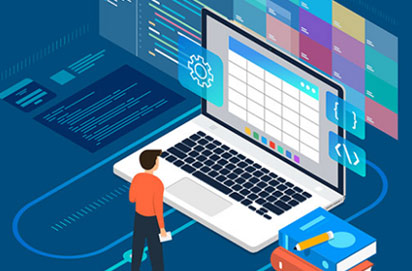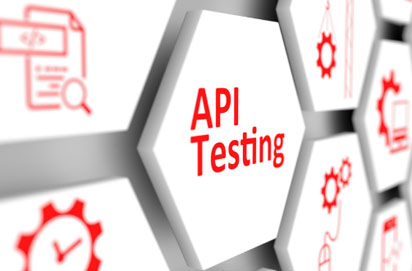Integrate Your Applications with API Development: Here’s How.
If you work in technology, you’re well aware of the complexity of development. It takes hours to create seamless pages and applications that work well across devices and boost user experience. As time goes on, you need to consistently monitor and update these pages and applications to ensure that you’re staying up to speed with your competition. However, there are a number of things available that can simplify development and strengthen your overall workflow. One of these is APIs.
What is API Development?

Application Programming Interface (API) is a specific software code that allows you to work with certain functions and properties without fully knowing about or needing to write the underlying code. In other words, an API is a code that’s already been written and tested that you can use to your benefit to allow different applications to interact with each other without the need to write in-depth back-end code. Still confused? Here’s a great, straightforward definition: an API is an interface that allows programmers to write code, which establishes a connection to supply the data for applications we use every day (i.e. tools, games, and social networks).3
APIs increase the efficiency of app-app communication to help connect the two while improving functionality for users. There are different types of APIs that you can use for different software development and applications, which we’ll cover in subsequent sections.
It’s important to clarify that an API isn’t necessarily an external service nor is it just an interface.1 There’s more to API development and they often include both the specification/formatting and the actual implementation process.1 If you’re still struggling to understand API development and integration in its entirety, here’s a good introductory article.
Why is API Development Important for Businesses?
One of the best things you can do for high efficiency programming and development is to learn about APIs and exactly how they can help both you and your business. API development gives you a chance to utilize fully functional apps that connect with each other without hours of work. APIs thus, increase your effectiveness at developing software and applications. They allow you to streamline your overall process, which in turn saves you hassle and frees up valuable resources. APIs give you an opportunity to avoid having to reinvent the wheel every time you start a new code. With APIs, you can use certain pre-existing parts of development to save you time and increase your effectiveness. APIs can also help you solve developmental issues that you might not fully understand or that would otherwise take you hours to fix. All in all, they make your life easier—especially when running a business.

APIs give your business a stronger infrastructure by creating a web of interconnectivity. As we mentioned, APIs save you time because they work to sync all of your data in a more automated, consolidated manner. With this, your team will be able to sort through, process, and organize information in the most streamlined way, which leads to better overall decision making. When you have the big picture in front of you and are able to understand all of the moving parts, you’ll be more likely to make decisions that will help you achieve your business goals and avoid common mistakes.
After understanding and implementing API development, you’ll likely notice an overall shift in productivity and an increase in office creativity. With insights from API development, you’ll save money and, in turn, boost your revenue. All in all, APIs help you open up your access to resources without sacrificing security or control. If you’re trying to expand your business, integrating your applications with API development is essential.
How to Integrate Applications with API Development
If you’ve never integrated an application with API development, you’ll want to make sure that you understand all of the steps before getting started. Luckily, API integration isn’t too difficult. All you need to do is connect your infrastructure through a cloud-native app development so that you can share your data with customers and other external users.2 Since every API development is different, take the time to read through the instructions and adhere to the specifics for that type and format of API.
The steps to integrate applications with API development tend to follow this general format:

- Step 1: Optimize Your User Experience
- Step 2: Secure the Proper Authentication
- Step 3: Utilize Discovery APIs
- Step 4: Customize Your Data
- Step 5: Map Your Data
- Step 6: Transform Your Data
- Step 7: Clarify Action
- Step 8: Determine Interactions
- Step 9: Synchronize
- Step 10: Log and Monitor
Different Types of APIs
There are a few different types of APIs that define how the information is used and transmitted. The two most common APIs are public and private, but some people also utilize partner APIs.
- Public API – this type of API is one that’s available to everyone and allows third parties to develop apps that interact with your API.2
- Private API – this is only used internally, giving companies the most control over their APIs.
- Partner API– this type of API is used when you want to share information between business partners without compromising quality.2
Choosing the Right API Development
With the increase in use of APIs, they’ve started to develop and transform into more user friendly and useful programs. With that being said, there are different API formats that you can choose from—all of which have their own benefits and drawbacks. In order to create and utilize the right API, you need to understand your overall objective and then go from there. The following are the most common different types of formats that people choose from when integrating their applications with API development.
Simple Object Access Protocol (SOAP)
SOAP is the protocol that is more well known throughout the API community, as it has strong features that go more in-depth. However, SOAP requires a little bit more knowledge about APIs and how to use them. The language works to further define the overall method of communication between the app and service. SOAP is the standardized API format that’s commonly used and has a strong amount of automation. It includes built-in error processing and tends to work better in a more distributed environment whereas REST uses more direct communication. In SOAP, you will receive messages through HTTP or SMTP. SOAP is good if you have apps running in different environments or ones that are written in different languages that need to share information.2
If comparing SOAP to REST, SOAP is considered more function driven. It’s a protocol rather than an architectural style.2 It uses XML formatting for messaging and data transfer.
XML
Extensible Markup Language (XML) is an older formatting language that is simple in its essence. It helps to define the rules and overall format for documents so that both front-end users can understand it along with back-end machine codes. XML is therefore both human-readable and machine-readable.
Representational State Transfer (REST)
In comparison to SOAP, REST is usually considered much more user friendly. It uses language that’s easy to understand and often takes developers less time to understand it if they’re not familiar with it. REST is fast and some people consider it more like a set of principles rather than a protocol. The simple nature of the characteristics utilized in REST means that you will also need to use interfaces that are simpler so that the manipulation is straight forward. REST is the more up and coming design model that people are using for APIs since it tends to be easier and still has strong functionality. When comparing REST to SOAP, you can view REST as the more data driven of the two. REST is considered an architectural style while SOAP is more of a protocol.2 Due to the ease of use, REST is growing in popularity and might soon overtake SOAP as the most widely used format of APIs.
REST uses multiple formats for messaging, but JSON formatting is the most widely utilized and is much smaller than XML.
JSON
JavaScript Object Notation (JSON) format is primarily used for easy storage and transportation of information from a back-end server to a web page. It’s easier to understand than XML and is known as a self-describing format.
By utilizing API development, you’ll notice a huge shift in the productiveness of your development. APIs can help you simplify the entire process of managing software and providing the best security options. Overall, by using APIs, you’ll relieve your business of time-consuming administrative action items. If you’re interested in integrating API development into your software, contact the professionals at Plego Technologies today. Our team of trained professionals are here to help you create an API development solution that works best for you and your programs. Call us today at
630-541-7929 to learn more or to schedule a consultation.
Sources:

